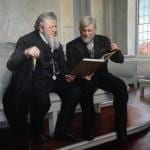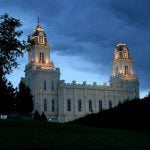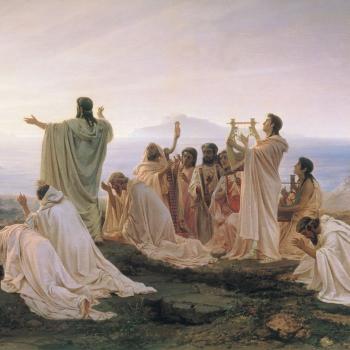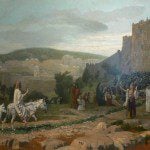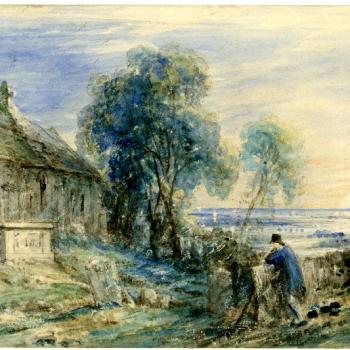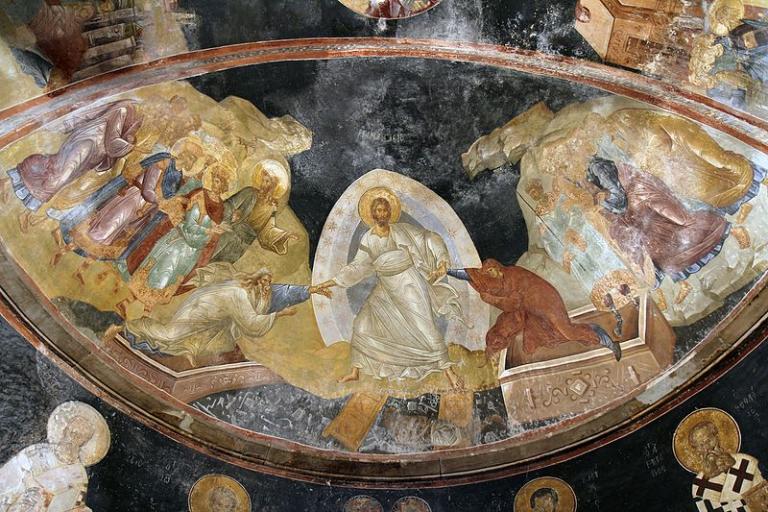
(Wikimedia Commons public domain image)
For the past two or three days, I’ve been spending a few evening minutes on Andrew Loke, Investigating the Resurrection of Jesus Christ: A New Transdisciplinary Approach (Routledge, 2020). The Singaporean Dr. Loke, an Associate Professor at Hong Kong Baptist University, practiced medicine for a while before going back to school in the United States and then on to to earn a doctorate in philosophy and theology at King’s College London. Thus far — I’m just finishing the first chapter — I like his approach. He is admirably systematic and methodical. I’ll offer two specimen examples here
The first is a long outline of reasoning on the question of the resurrection of Christ:
(1) Either (1.1) or (1.2) is true: Note that ‘or’ is taken in the exclusive sense in this syllogism as well as the next.
(1.1) There were no people in mid-first-century (AD 30–70) Palestine who claimed to have witnessed the resurrected Jesus (the New Testament accounts of such people are all legends: call this the legend hypothesis).
(1.2) There were people in mid-first-century Palestine who claimed to have witnessed the resurrected Jesus, in which case either (2.1) or (2.2) is true:
(2.1) All of them did not experience anything which they thought was the resurrected Jesus (no experience hypothesis).
(2.2) At least some (if not all) of them did experience something which they thought was the resurrected Jesus, in which case either (3.1) or (3.2) is true:
(3.1) All of these ‘experiences of Jesus’ were caused intramentally in the absence of appropriate sensory stimulus (call this the intramental hypothesis; examples include hallucinations, ‘subjective vision,’ ‘stimulus,’ ‘religious intoxication,’ ‘enthusiasm,’ and ‘illumination’).
(3.2) At least some (if not all) of these ‘experiences of Jesus’ were caused by an extramental entity, in which case either (4.1) or (4.2) is true:
(4.1) For all these experiences, the extramental entity was not Jesus (for example, they mistook another person for Jesus: mistaken identity hypothesis).
(4.2) For at least some (if not all) of these experiences, the extramental entity was Jesus, in which case either (5.1) or (5.2) is true:
(5.1) Jesus did not die on the cross (swoon/ escape hypothesis: that is, either Jesus swooned on the cross, exited the tomb and showed himself to the disciples later [‘swoon’], or Jesus had secretly escaped prior to the crucifixion, somebody else was crucified, and Jesus showed himself to the disciples later [‘escape’]).
(5.2) Jesus died on the cross (i.e. the extramental entity they experienced was Jesus who rose from the dead), in which case (6) Jesus rose from the dead (resurrection).
Based on the aforementioned syllogism . . . we can know that essentially there are seven and only seven possible categories of explanations concerning the claims of Jesus’ post-mortem appearances, viz. legends, no experience, intramental, mistaken identity, swoon, escape, and resurrection. It should be emphasized that there are essentially no other possibilities apart from the ones listed earlier (although various combinations of these possibilities are possible)
[B]y reducing the myriad of alternative theories that have been (in Ehrman’s phrase) ‘dreamed up’ (or yet undreamed of) to essentially six, it will be demonstrated in the following chapters that, once certain considerations are established, all the alternatives and their combinations can reasonably be excluded. (pages 24-26)
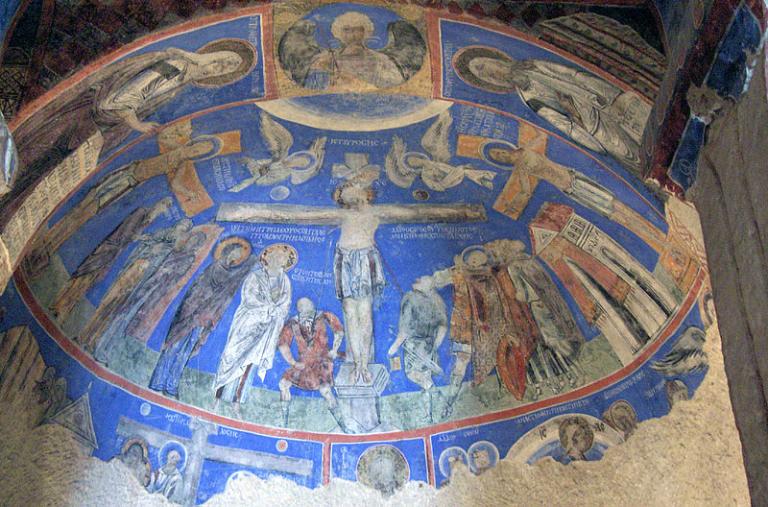
(Wikimedia Commons public domain image)
And here, following close on the heels of the previous outline of possible alternatives, is a second. This one has a slightly different but complementary focus:
(7) Either (7.1), (7.2), or (7.3) is true:
(7.1) Jesus was not crucified (escape hypothesis).
(7.2) Jesus was crucified and he was not buried (unburied hypothesis).
(7.3) Jesus was crucified and he was buried, in which case either (8.1) or (8.2) is true.
(8.1) The body of Jesus remained buried (remain buried hypothesis).
(8.2) The body of Jesus did not remain buried, in which case either (9.1) or (9.2) is true:
(9.1) The body was removed by non-agent(s), e.g. earthquakes . . ., animals, etc. (removal by non-agent hypothesis)
(9.2) The body was removed by agent(s), in which case either (9.2.1) or (9.2.2) is true:
(9.2.1) Others removed the body,
either (9.2.1.1) Friends of Jesus (removal by friends hypothesis),
(9.2.1.2) Enemies of Jesus (removal by enemies hypothesis),
or (9.2.1.3) Neither friends nor enemies, e.g. tomb robbers (removal by neutral party hypothesis).
(9.2.2) Jesus himself removed his body, in which case either (9.2.2.1) or (9.2.2.2) is true:
(9.2.2.1) Jesus did not die on the cross: he swooned on the cross and fell exited the tomb later (swoon hypothesis), or
(9.2.2.2) Jesus died on the cross, rose from the dead, and exited the tomb (resurrection).
This syllogism exhaustively covers all the possibilities. The significance of such a logically exhaustive list of hypotheses is similar to that for the post-mortem appearances.
First, based on the list we can know that essentially there are nine and only nine possible categories of hypotheses concerning the empty tomb, viz. escape, unburied, remain buried, removal by non-agent, removal by friends, removal by enemies, removal by neutral party, swoon, and resurrection..
Second, the list helps to ensure that all possible categories of hypotheses as well as their combinations are considered before the conclusion concerning whether the resurrection is the best explanation [is] reached.
Third, by reducing the myriad of alternative theories to essentially eight, it will be demonstrated in the following chapters that, once certain considerations are established, all the alternatives as well as their combinations can reasonably be excluded. (pages 26-27)
I find Professor Loke’s organized setting forth of the alternatives quite helpful and neat. I share it in the hope that, if there is anything of significance that he has omitted, one of my alert readers here will point it out.



